
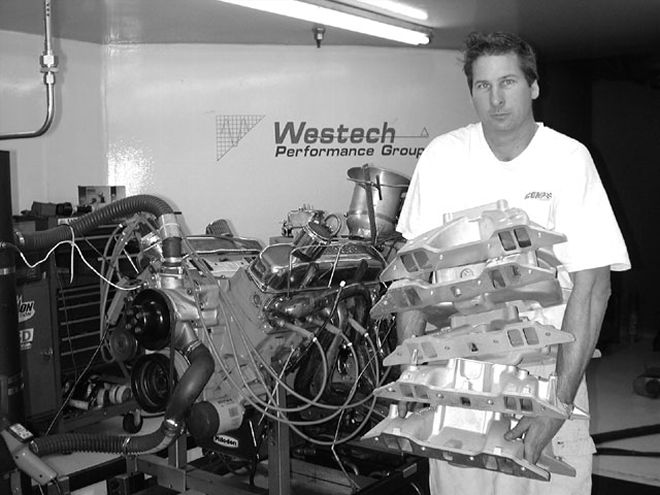 What can be more fun than a dyno, a stack of 440 intakes, and all day to test 'em?
What can be more fun than a dyno, a stack of 440 intakes, and all day to test 'em?
It seems everyone has a favorite intake manifold. Some guys scour swap meets, garage sales, and dumpsters looking for long discontinued intakes because they know "they're the best." Others are convinced the old 440 Magnum four-barrel iron piece is as good as it gets, although a little heavier than that aluminum aftermarket stuff. Tell them it's the exact same intake used on Grandpa's standard 440 Chrysler New Yorker of the same year, and chances are they'll call you a liar. What's the truth? To some extent, that depends on what you're after. It's said that two-plane intakes produce more power lower in the rpm range, while single-planes offer more power higher in the range, given an engine built for high-rpm performance. I've seen it in enough dyno runs to know it's more than a myth. This is a good place to start, but most people have to rely on past experience. To get some real-world data, we lined up some intakes and ran a dyno test.
The Setup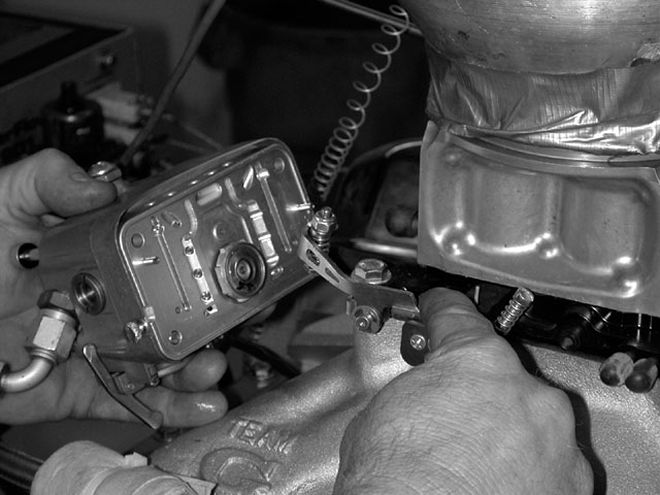 <strong>The Setup</strong><br>We jetted the carb for max performance and monitored the dyno readings on fuel flow, ratios, and BSFC throughout the test.
<strong>The Setup</strong><br>We jetted the carb for max performance and monitored the dyno readings on fuel flow, ratios, and BSFC throughout the test.
Here's a simple piece of engine-building theory to consider: The more power the engine makes, the more critical manifold selection becomes to peak power output. Take a stock big-block and run a comparison on intakes-there may be 15-25 hp between the best and worst. Run the same intakes on a radical drag motor, and the range will broaden dramatically.
Of course, there are considerations other than peak power output when selecting an intake for a specific combo. For instance, factors such as the rpm range and low rpm torque requirements of the application require attention. However, if the goal is to put a selection of intakes through the acid test, the way to do it is to run them on a high-powered engine that will really pull the air. Our objective this time was to test for higher rpm power. We gathered as many 440 intakes as we could get our hands on and did just that.
All the intakes were single four-barrel 4150-flanged designs; and all, with one exception, were run out-of-the-box stock. When custom porting enters the equation, a big variable is thrown into the results. Some intakes naturally benefit from porting or even port matching, but the end user's results also vary depending on who does the port work. While hardcore builders wouldn't consider running a manifold without doing some carving first, the majority of intakes are likely just unwrapped and bolted on. This is exactly what we did here. Note that our high-powered test engine and test rpm range greatly favored the single-plane designs, so all of the single-planes had an advantage.
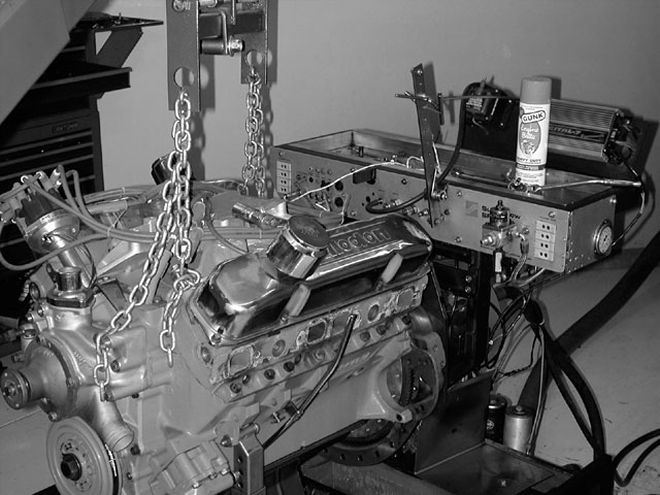
The Engine
The mule for our test wasn't your ordinary street mill, but rather a stout 440 combo that could use all the intake it could get. The block was .060-inch-over production 440, with Arias-forged 12.5:1 domed pistons, Eagle H-beams, the factory-forged crank, and a Milodon oiling system. The heads were production-915 castings and the ports were seriously reworked with max effort (no welding or epoxy) porting job and fitted with custom Manley 2.25-inch intake valves and 1.81-inch exhausts. Working the valves was a full Competition Cams' cam-and-valvetrain package, including a custom Comp roller, with their NC4149 intake lobe and High Tech .420-inch exhaust lobe. It worked out to 260/258 at .050-inch and over .650-inch lift with Comps 1.6:1 aluminum roller rockers. A Milodon gear drive turned the cam. We called it the "Iron Head Air Hammer."See Mopar Muscle March 1999, May 1999, and Sept. 2001 for more on this engine.
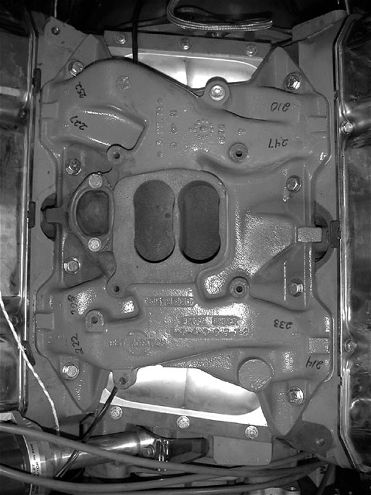 Factory Iron Circa '70-'71
Factory Iron Circa '70-'71
1. Factory Iron circa '70-'71
For our first test, we bolted on a factory #2951736 cast iron intake, the four-barrel intake used on '70 and '71 440s. We'd like to think that no one in their right mind would bolt one of these onto a high compression, big-valved, roller-cammed 440, but we had to start someplace. Even we were surprised to see the numbers we got, although the engine was way off its potential. On stock and mild engines, we've seen meaningful gains easily achieved with aftermarket intakes.
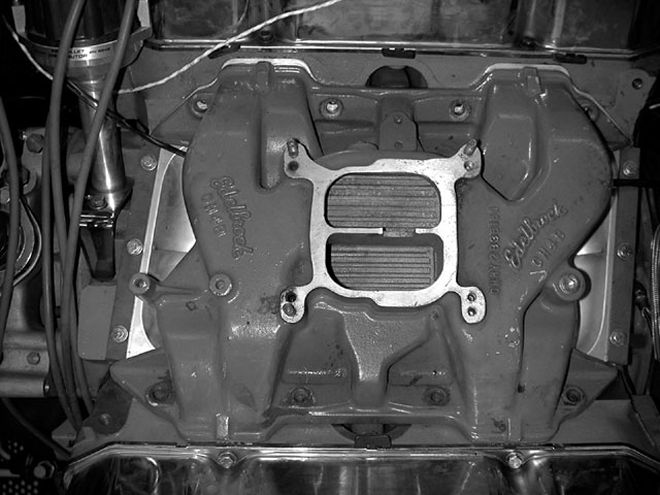 Edelbrock CH4B
Edelbrock CH4B
2. Edelbrock CH4B
This intake has been out of production for years but retains a loyal following. Once Edelbrock's premier two-plane intake, it also sold through Mopar's Direct Connection program back in the day and is well remembered by old-time Mopar enthusiasts. We borrowed this one from local Mopar bud Harry Gicesare. The CH4B is similar in look and layout to the stock intake, and is a relatively low profile design. The numbers showed a substantial improvement compared to the stocker over most of the range tested, particularly higher up in the range. Interestingly, peak horsepower occurred very high in the rpm range with the CH4B, equaled only by the new Victor. It tended to favor higher rpm performance and was kind of soft at the bottom of the range. The averages were quite good among the other two planes, well ahead of the stocker. No wonder people remember this as a good intake.
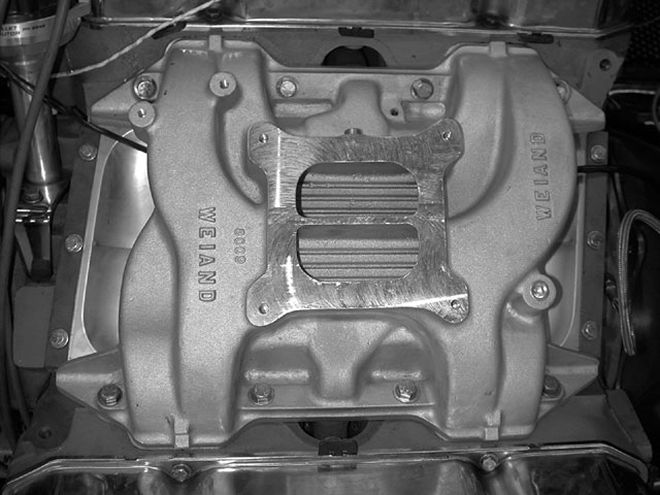 Weiand Action+
Weiand Action+
3. Weiand Action+
The Action+ was originally designed as an updated stock replacement intake, with a layout and height very close to the original Chrysler iron intakes. Unlike the CH4B, the Action+ is still in production and makes substantially more top-end horsepower than the OE intake, while retaining a stock look and profile. For a two-plane, it pulls up very well into the higher rpm range, showing peak horsepower at 6,300-6,400 rpm. It would be a good choice for stealthy performance while retaining hood clearance, and may be just the ticket for a performance boost in an Air-Grabber-equipped car, where a high rise will throw off the factory underhood induction's fit.
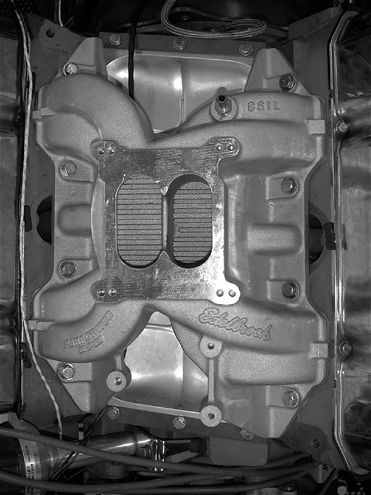 Edelbrock Performer RPM
Edelbrock Performer RPM
4. Edelbrock Performer rpm
The Performer RPM two-planes have been among the most successful Edelbrock intakes of all time. The RPM was the power champ of the two-plane intakes by a solid margin, making the most horsepower and torque, with the averages up substantially as well. In a street application where performance is the goal, the RPM is hard to top. It's taller than the stock intake, a consideration in some applications, and gives away its intent with a discernably non-stock appearance.
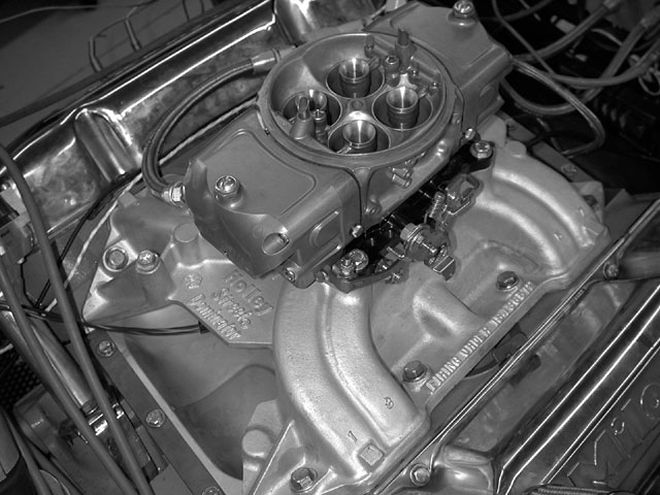 Holley Street Dominator
Holley Street Dominator
5. Holley Street Dominator
The Holley Street Dominator has been around for decades. A personal favorite, this intake has long been regarded as one of the best all-around single-plane intakes for the 440, even endorsed as such by Chrysler's old Direct Connection program. Ridiculously rated to only 4,800 rpm, the Street Dominator pulls well into the 6,000s. The Holley manifolds of the era were the first designs to employ widely swept runners for a straighter approach into the cylinder head port-a form common in modern intakes. Low profile by today's standards, this manifold doesn't look like much, but consistently delivers results. Although we didn't realize it until after the dyno pulls, this intake had been mildly modified in the past. The runners had been port-matched, and the carb-pad to plenum transition was slightly altered to more closely match a spread-bore ThermoQuad. In fact, the Street Dominator runners are cast close to the port size anyway and we were running a square bore Demon, but stock is stock and cut is not. We like the Holley Street Dominator and figured it would be at its limits on this 600-plus-hp test engine. The Street Dominator had the biggest average numbers, and was very close to the top manifold in peak horsepower. Any way you slice it, the Street Dominator from Holley is a very functional piece.
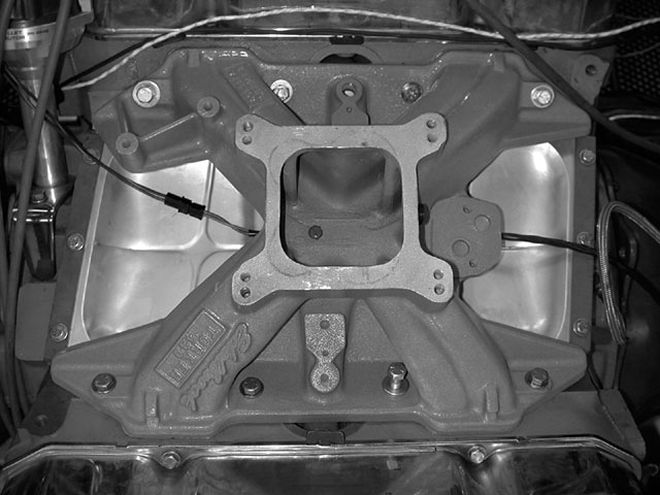 Edelbrock Torker (original)
Edelbrock Torker (original)
6. Edelbrock Torker (original)
Another popular intake was the old Edelbrock Torker single-plane. The Torker features relatively straight, comparatively small cross-section runners. Although out of production for many years, this intake was sold in such numbers they're still plentiful. Frankly, I'd never been a fan of these intakes, even though I'd run a number of them in various 440-equipped Mopars. For me, the Torker results were a shocker, and something of an enigma. The Torker ripped an unreal 608.4 lb-ft, the highest peak torque of the test. The high torque was startling. Peak horsepower came in at 605, but the manifold peaked this .670-inch lift, roller-cammed, 2.25-inch-valved, max-ported 440 at an unbelievably low 5,500 rpm. I guess that's why they called it the Torker.
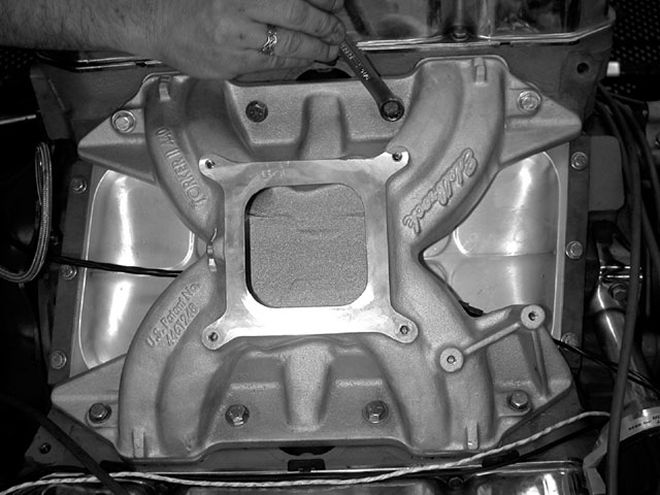 Edelbrock Torker II
Edelbrock Torker II
7. Edelbrock Torker II
The Torker II is, as the name implies, the replacement for the original Torker. In fact, the two designs couldn't be more different. The Torker II replaces the earlier manifold's small, straight, X-shaped runners with generous runners of a more modern, sweeping design. The Torker II performed exactly as we would expect a high-performance single plane to behave, coming on strong up top to post nearly 628 hp at 6,300 rpm. The averages showed this to be a solid performing manifold across the powerband. At over 1/2-inch shorter than the Performer RPM dual-plane, the Torker II is good choice for a hot street 440.
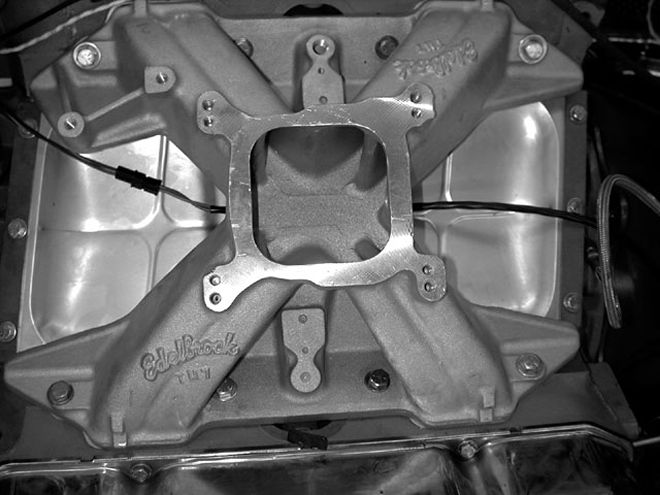 Edelbrock TM-7
Edelbrock TM-7
8. Edelbrock TM-7
The TM-7 is an intake brought back by popular demand. Of the same vintage as the original Torker, the TM-7 was discontinued but later revived by Edelbrock. The TM-7 is similar in design to the original Torker. In fact, it's difficult to tell them apart at first glance. They share the same runner layout, but the TM-7's runners are considerably taller for more cross-sectional area. The overall height to the carb pad is virtually the same. The behavior of these two similar-appearing manifolds, though, is worlds apart. The TM-7 made more torque than the Torker II, but didn't equal it in top-end horsepower, turning in respectable numbers up top nonetheless. The averages turned in by the TM-7 were right at the top of the pack, showing this manifold to be a good all-around performer in a high-powered application.
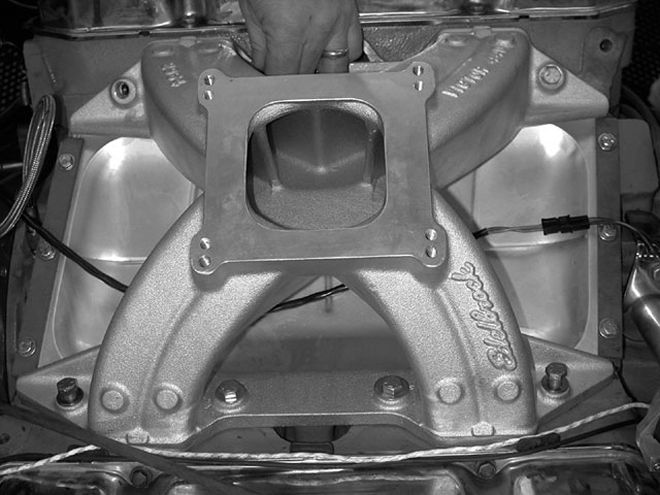 Edelbrock Victor 440
Edelbrock Victor 440
9. Edelbrock Victor 440
The Victor, designed by Edelbrock engineer Ulysses Gonzales, is the latest race intake from Edelbrock. It is an impressive looking piece with nicely sweeping runners and a generous cross-sectional area. The design is truly attractive, devoid of the usual bosses and bumps but with the purposeful look of just runners and flanges. We figured the Victor was the manifold most suited for our high-powered 440, and the manifold proved it, delivering the highest output of our test with a solid 637.7 hp at 6,400 rpm. Torque and power throughout the range was outstanding, with the Victor showing the highest average torque of any of the out-of-the-box intakes. The team at Edelbrock did their job well with this one.
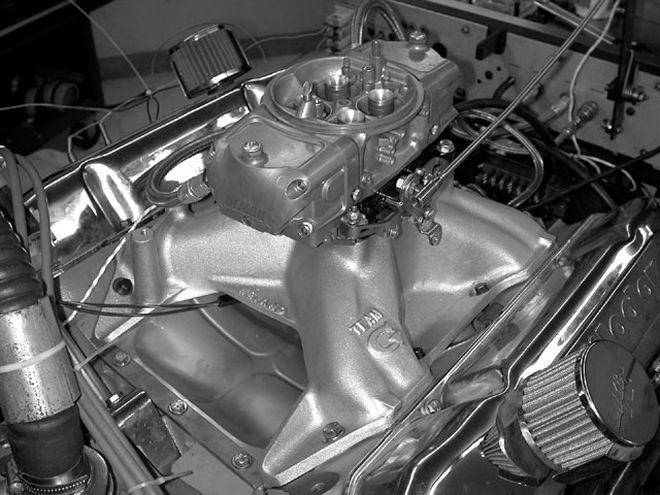 Weiand Team G Track Ram
Weiand Team G Track Ram
10. Weiand Team G Track Ram
The Weiand Team-G has been a popular race intake for years. We had less than spectacular results on our 440, and closer inspection revealed some casting flaws in this particular intake. There was serious core shift, which we suspect is the exception rather than the rule. The ports were shifted over substantially and misshapen at the port exit. We can say for a fact that the results we obtained are not indicative of the design, but rather what happens when the holes in the manifold are not in alignment with the holes in the heads. We know some racers get power out of these things, so we'll have to hold judgement until we can get a good one.
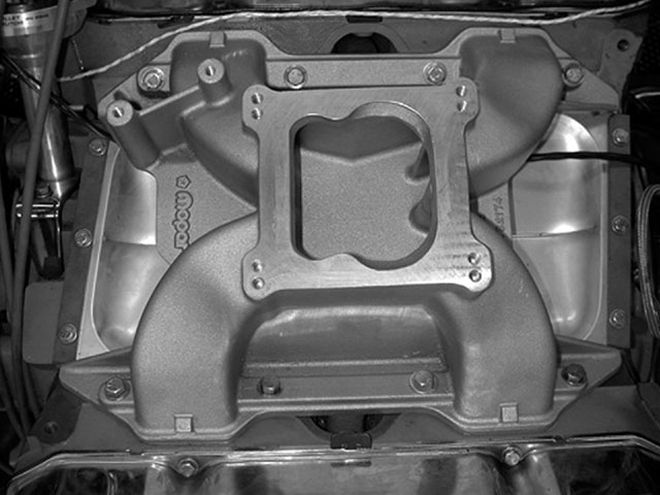 Mopar Performance M-1
Mopar Performance M-1
11. Mopar Performance M-1The M-1 is the factory's own entry into the race single-plane market. The M-1 is a nicely laid-out intake, designed with high-rpm power in mind. We own one that has been heavily ported, and the flow is outstanding, but that left us lacking a stock one for this test. Luckily, Bob Mazzolini, a leading Mopar Performance retailer, covered us with a new one to use. It achieved the second highest peak horsepower output of the stock intakes in our test. The carb pad will accept a standard square-bore carb, as well as the popular ThermoQuad spread-bore-a feature shared only with the Holley Street Dominator among the manifolds we tested. It tended to favor upper rpm power to lower range torque, making it best suited for high-revving race big-blocks.
The Intake:MP #P4529463Type:Aluminum Single-Plane Four-BarrelRated rpm Range:N/AMax hp:628.9@6,{{{100}}} rpmMax Torque:589.3@4,900 rpmAvg. hp 4,000-6,600 rpm:563.7 hpAvg. Tq 4,000-6,600 rpm:566.9 lb-ft